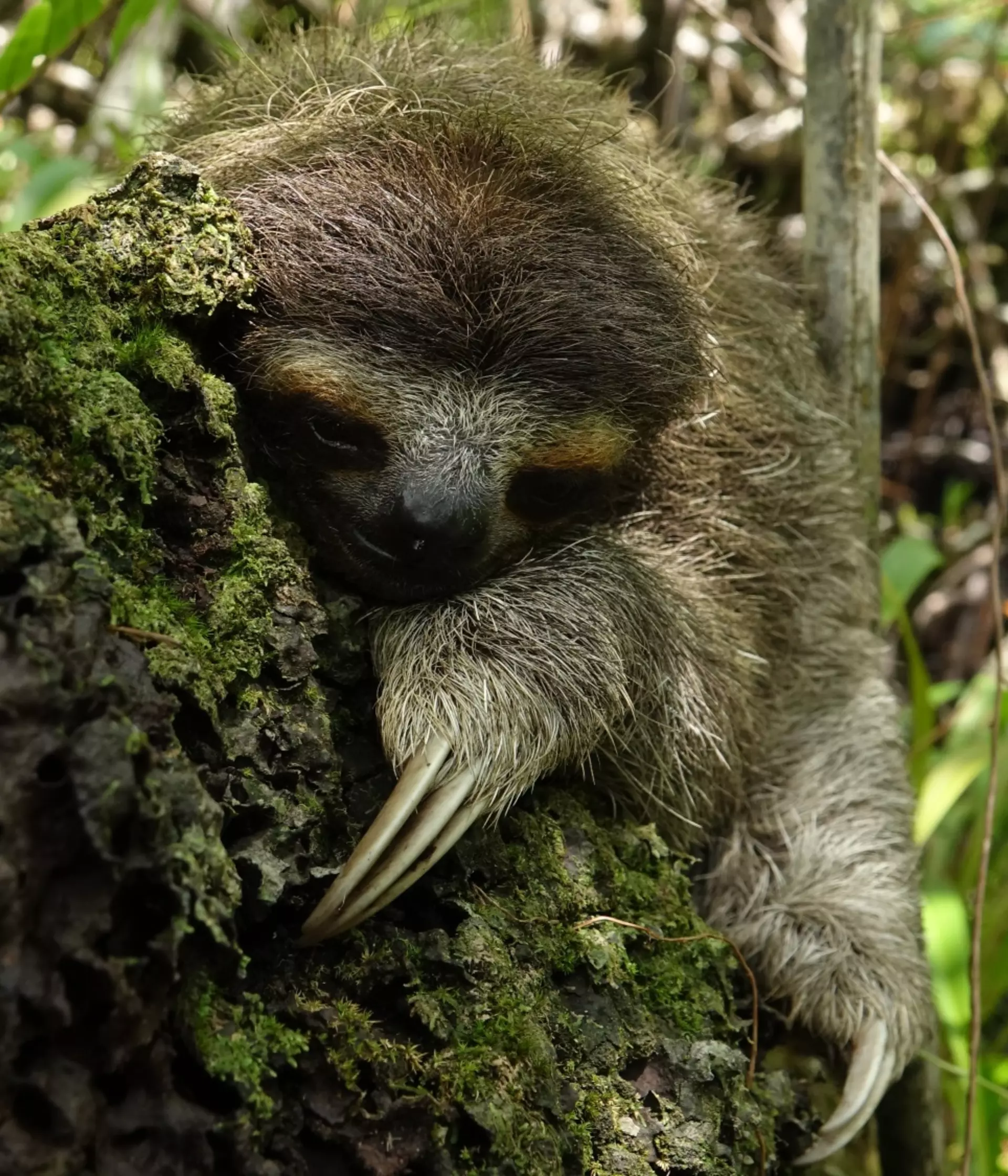The pygmy three-toed sloth was only described scientifically in 2001 and is Critically Endangered.
Sloths used to be elephant-sized giants that roamed the earth alongside other prehistoric animals. Now we are protecting a group of the world's smallest sloth species living on the uninhabited Isla Escudo de Veraguas, a tiny island of less than 4.3km², located 17 km northeast of Bocas del Toro in Panama.
A team of conservationists from ZSL are surveying them to build the first picture of how these little-known animals are faring.
Aims
This project aims to improve our understanding of the pygmy sloth population and the threats to the species. To ensure the conservation of the species, it also carries out educational programmes and workshops to increase local awareness, enhance support for conservation, establish sustainable resource management, and support local authorities in enforcing legal regulations.
Our long term aim is to establish and implement a participatory management plan that engages all stakeholders in the conservation of Escudo and the pygmy sloth.
Background
The Critically Endangered pygmy sloth is only found on Escudo de Veraguas, a tiny island off the east coast of mainland Panama. The island is the only land mass in the 41,596 ha Escudo de Veraguas-Dego Protected Sanctuary and is a part of the natural heritage of the local Ngobe-Bugle people.
Although Escudo is protected, its natural resources may legally be utilised by local communities. The island is uninhabited, but there are seasonal residents that temporarily live on the island: indigenous fishermen and occasional tourists. The numbers of seasonal residents are growing, increasing the pressure from small scale logging, fishing and littering. There is also a looming threat of large-scale tourism as the number of visiting holiday-seekers is rapidly increasing.
Historically there has been little conservation attention or support for the pygmy sloth and the island habitat it depends on. This project seeks to address the threats facing the pygmy sloth, while helping to ensure the sustainable livelihoods of the Ngobe Bugle people.
Read about this project in more detail
Actions
The field team, led by former EDGE fellow Diorene, visit Escudo twice a year to monitor the pygmy sloth population. Transects are walked through the mangroves and forest, where the team record the number of sloths and other important data on their activity and habitat use. We have also put radio collars and GPS backpacks on the sloths to help us find out how large an area each individual needs and which parts of the island they use in different seasons.
The majority of the field team are from the local communities, and the project maintains very close links with the villages on the coast of Panama nearest to Escudo. Collaborations with other NGOs and community organisations have resulted in five successful workshops within these communities; these workshops are forums to explore and discuss the sustainable use of Escudo’s resources while maintaining local livelihoods. In addition, environmental education activity days have now been carried out in seven of the local communities.
The days include an innovative puppet theatre and the distribution of activity books and posters. The first ever local school group with students and teachers visited the island with the field team in 2016.
Achievements
Twice-yearly population monitoring surveys in the mangroves have been carried out since 2014. We have obtained the first officially confirmed records and photographs of the sloth in the forest. Radio collars have been successfully deployed on five individuals, and GPS loggers have been tested successfully in preparation for scaling up deployment to monitor seasonal habitat use.
Over 250 people have attended a sustainability workshop. Participants showed a keen interest in training and future involvement as community monitors for important animal and plant species. Over a thousand children have been included in the environmental education activities.
Diorene Smith successfully completed her EDGE fellowship in 2015. In 2016, Diorene was awarded the Disney Conservation Hero Award for her impressive dedication and hard work towards the conservation of this species. Diorene has joined the IUCN Xenarthan Specialist Group and has helped to establish a collaborative ‘Committee for the Protection of the Pygmy Sloth’ overseeing conservation and research activities.
The longevity of the project has enabled our team to develop and maintain essential positive relationships with the local Ngabe Bugle communities and authorities, as well as the Ño Kribo Regional and National Environmental Authorities (ANAM). Rangers from the environment ministry now also attend all field trips, improving the ability to enforce regulation of tourism and pollution.
Key species
Pygmy 3-toed sloth
Critically Endangered,
Habitat restricted to Isla Escudo de Veraguas (<4.3km²)
People involved
- Diorene Smith Cabellos is the former EDGE Fellow leading the field team and logistics
Partners and sponsors
Kindly funded by:
- Disney Conservation Fund
- USFWS - Critically Endangered Species
- Mohammed bin Zayed Species Fund
- Prince Bernhard Fund for Nature
- People's Trust for Endangered Species
- British Ecological Society
- Royal Geographical Society
- British and Irish Association of Zoos and Aquariums
- Papoose Wildlife Conservation Foundation
- Zoologischer Garten Halle
